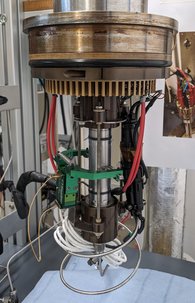Background
Petrothermal energy is the share of geothermal energy stored in hot, but low permeability rocks in the Earth’s crust, typically with small amounts of naturally occurring fluids. In principle, petrothermal energy is available everywhere, especially in deeper and higher-temperature rock formations. The petrothermal potential in Germany and worldwide is therefore orders of magnitude greater than the potential of conventional high-permeability hydrothermal reservoirs with naturally occurring hot water. There are two groups of technologies for extracting petrothermal energy: Enhanced Geothermal Systems and Deep Borehole Heat Exchangers, i.e., open and closed systems.
In several research projects, we are investigating how petrothermal resources in different geological settings (e.g., sedimentary, crystalline, and volcanic) can be developed reliably and safely in order to increase the share of such systems in renewable energy solutions. Our research approach spans over multiple scales, from individual minerals to whole reservoirs in multiple locations worldwide, and is multi-methodological, including laboratory investigations, numerical simulations and field work.
Key scientific questions
- How can we use petrothermal energy economically and safely?
- How can we increase and maintain the productivity and injectivity of geothermal wells?
- How are fluid-rock interaction processes affecting reservoir performance and how can they be controlled?
- How do operational parameters and geological constraints influence the potential for induced seismicity?
- How can we better assess, monitor, utilize, model and mitigate injection-induced seismicity?
Related projects
- ARES | Advanced reservoir engineering concepts for a controlled utilization of geothermal energy in urban areas
- SMART-EGS | Synthesis of numerical modelling approaches for reservoir treatments in Enhanced Geothermal Systems
- DT-GEO | Digital twin for geophysical extremes
- TRANSGEO | Transforming abandoned wells for geothermal energy production
- THC-Prognos | Hydrochemical characterisation for predictive modelling of sustainable reservoir management
- GeoLaB | Geothermal laboratory in the crystalline basement





